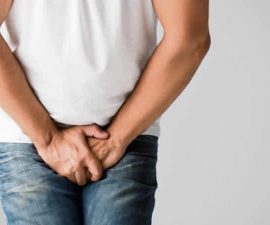A hernia is usually characterized by a bulge (lump) that occurs when the abdominal tissues come through the hole in the abdominal wall fascia. Sometimes it can be painful to touch, and also worsen when you have extra pressure in the abdomen such as when standing, walking, coughing, and straining. And it usually relieves when lying down. But a challenging question, can hernia occur without a lump? The answer is probably ‘yes’ especially in women.
Invisible hernia (hidden inside)
Fascia is a sheet (layer) of connective tissues in the abdominal wall that runs from the chest to the groin area. This strength layer is responsible to keep some abdominal contents (such as abdominal tissues) in place. And a tear (breach) or hole in the wall abdominal fascia is, by definition, a hernia.
In general, hernias are more common in elderly people. We can say that the risk of developing hernias usually increases with age, though not always (some are there after surgery or even at birth). A continued weakening and tearing of the abdominal fascia may eventually form a weakening spot or hole that allows the abdominal contents to push through, causing a bulge or lump.
Hernias are commonly thought of as a male health issue, because they affect men much more often than women. For example, men are about 10 times more likely to develop inguinal hernia, which is the most common type of hernia. On the other hand, women only account about 8 % of all hernia cases in the United States. That sounds like good news for women, but wait …
Men’s hernias are relatively easier to diagnose since an obvious lump usually appears in the abdominal areas commonly associated with hernia – they often push outward to the point that can be discovered ‘easily’. But for women’s hernias, the symptoms may not be the same as in men.
In women, sometimes diagnosing hernia can be tough, because it’s generally smaller and harder to see (hidden inside). So it’s possible women to have the disease without a lump, making it harder to clearly detect. In their search for diagnosis and relief, they are often shuttled from psychiatrists to doctors to pain specialists. Correct diagnosis can take longer, months or even years. Also, women tend to have pain, and life can be more miserable – though the visual symptoms are less likely to present.
Furthermore, female lower abdominal pain (including pelvic pain) can be attributed by many factors and conditions. The common ones include ovarian cysts, endometriosis, fibrosis, menstrual cramps, appendicitis, irritable bowel syndrome, pelvic inflammatory disease, uterine fibroids, complications of past surgical procedures, and many more.
Among those possibilities, hernia may be the last scenario to look for – this especially true if you see a gynecologist, a health professional who tends to consider a ‘female’ issue as the reason for the pain! As a result, you may need to follow a battery of procedures and tests before the real (main) culprit is discovered. Even sometimes the exact cause is unknown even after following a lot of tests.
Hernia symptoms with no bulge
In both men and women, treatment options are similar. Surgery is usually the main treatment for hernias, though there are also some non-surgical procedures. Since surgery carries some risks, treatment is not necessary as long as the disease isn’t bothering you. But it’s recommended to keep monitoring the disease so early treatment can be given (if required).
Though treatment options for both genders are not different, again the challenging thing is how to early catch the disease especially in women. As well we know that a physical exam is usually enough to determine whether or not a bulge is hernia. But this could be different for some women with hernias.
If you have some symptoms of hernia and you don’t feel /see any lump in your abdominal areas, some tests are usually required to get correct diagnosis. These include ultrasounds, X-rays, MRI, and CT-scans. An ultrasound test is the cheapest option to confirm a hernia, but it’s not effective if you have had a surgery in the abdominal cavity since you may have scar tissue and mesh that remain in there after operation! You may need to take several times of imaging tests.
Female hernias may not cause a lump since they are sometimes too small to protrude. But if you do believe that there’s something wrong in your abdominal areas, see a doctor promptly! Some hernia signs and symptoms with no bulge are as follows:




